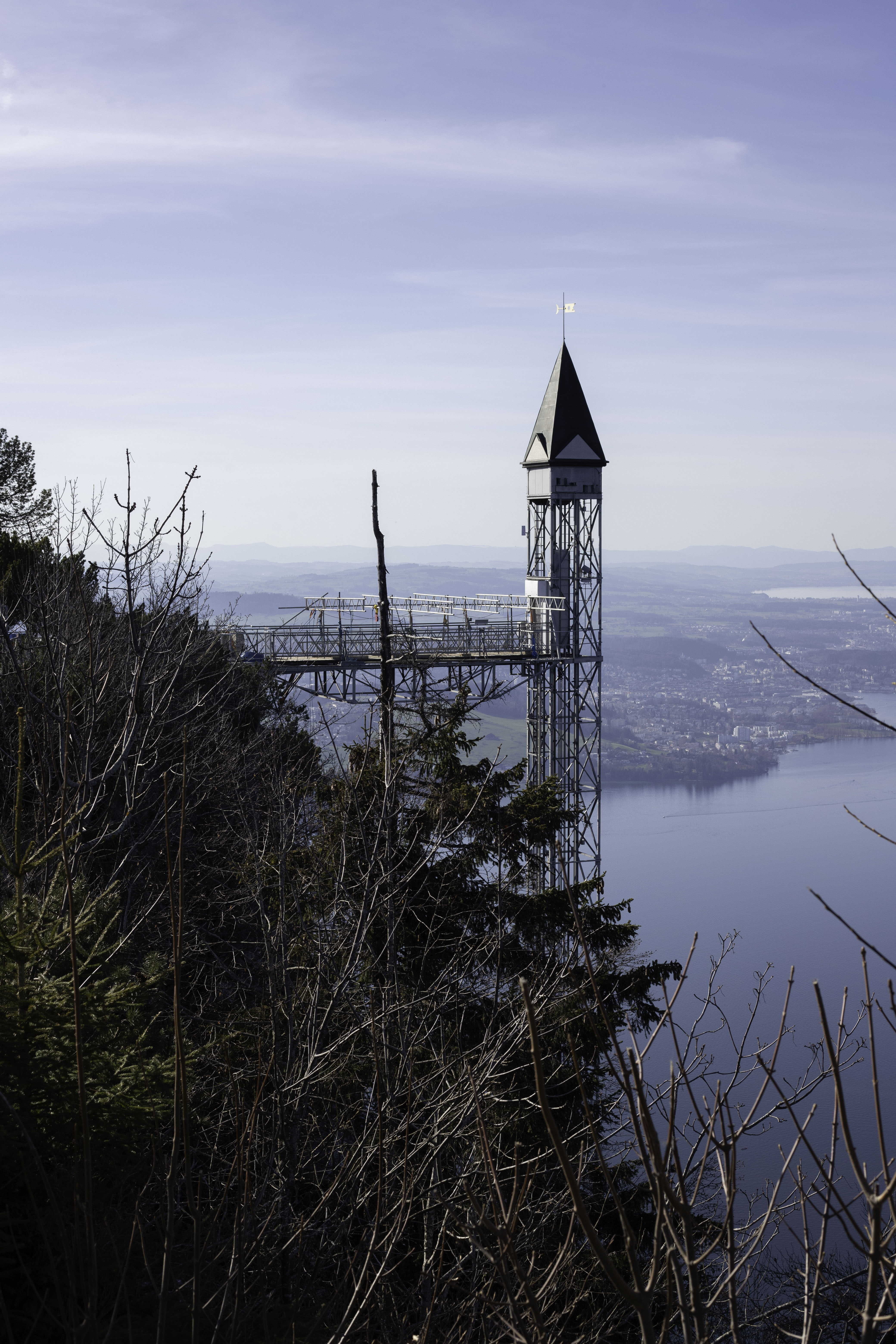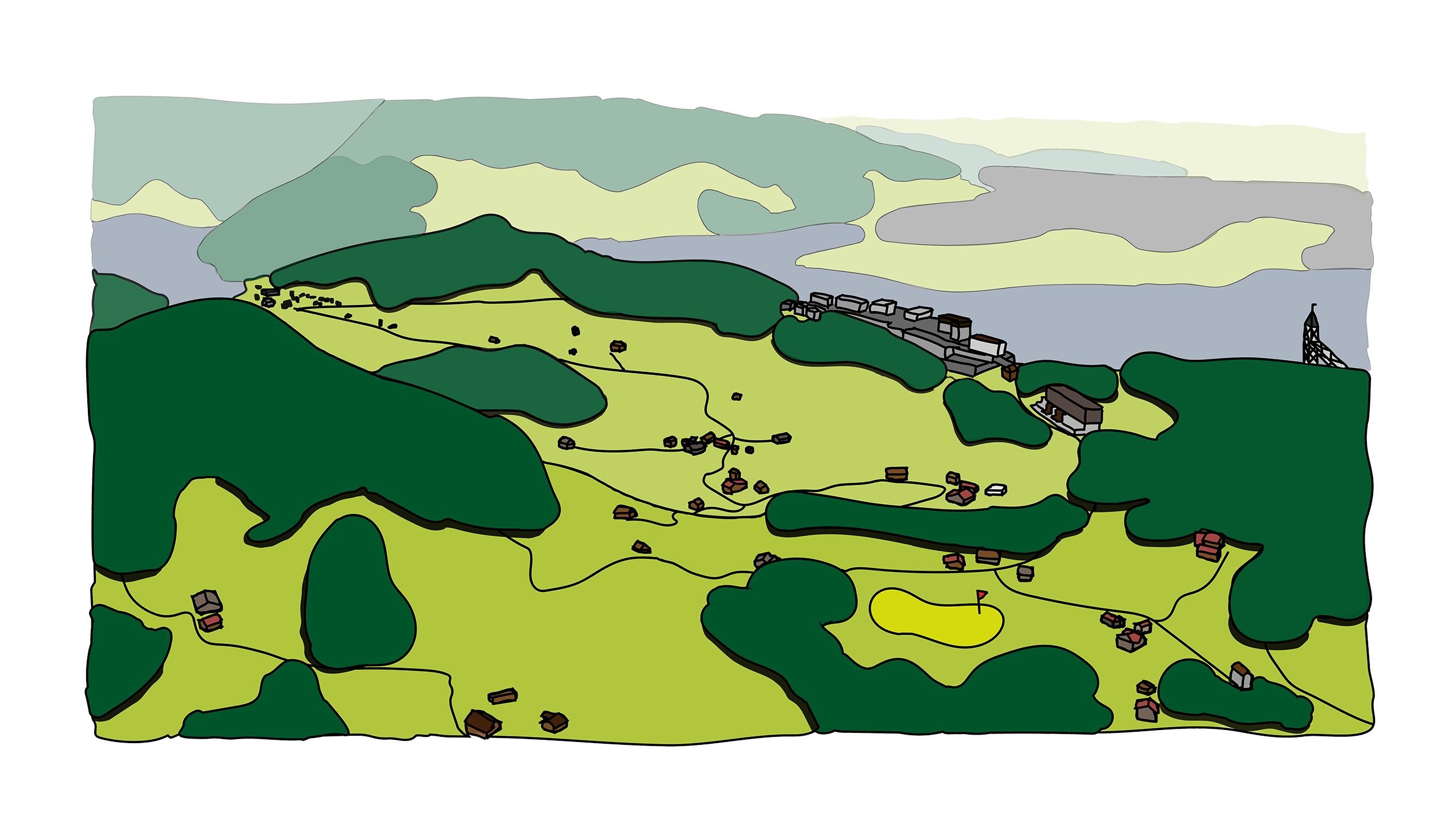Der Nobelkurort Bürgenstock, in bester Aussichtslage, ist seit 1872 ein beliebter Ferienort für Wohlhabende. Der Hotelier und Eisenbahnpionier Franz Josef Bucher-Durrer liess zwischen 1897 und 1902 einen attraktiven Spazierweg in den Felsen der steil zum Vierwaldstättersee abfallenden Nordflanke des Bürgenstocks schlagen, den sogenannten Felsenweg. Vom Känzeli, wo der Felsenweg endet, wurde zwischen 1903 und 1905 als weitere Attraktion ein offener Aussenlift zur Hammetschwand gebaut. Gebaut wurde der 153 Meter hohe Hammetschwand-Lift vom Unternehmen Löhle & Cie. aus Kloten.
The posh spa town of Bürgenstock, with splendid views, has been a popular holiday destination for the wealthy since 1872. Between 1897 and 1902, the hotelier and railway pioneer Franz Josef Bucher-Durrer had an attractive promenade cut into the steep rocky slopes of the northern flank of the Bürgenstock, down to Lake Lucerne, the so-called Felsenweg (rock path). As a further attraction, an open external elevator from the Känzeli, where the Felsenweg ends, to the Hammetschwand was built between 1903 and 1905. The 153 meter high Hammetschwand elevator was built by Löhle & Cie. aus Kloten.




